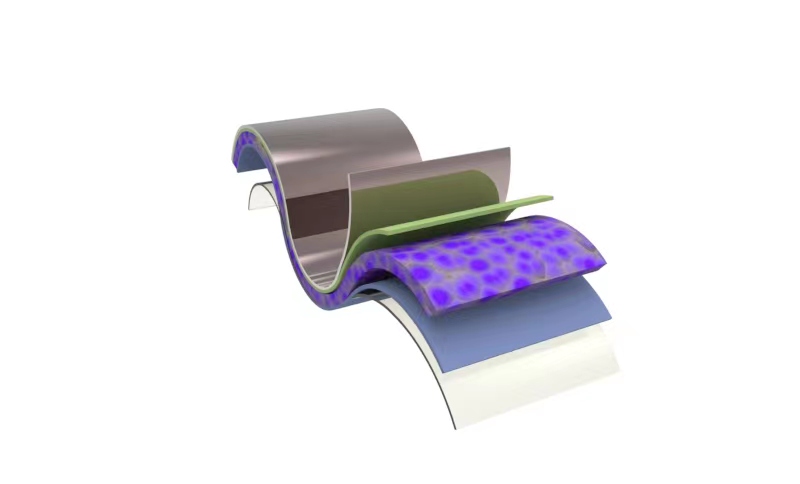A research group led by Prof. GE Ziyi at the Ningbo Institute of Materials Technology and Engineering (NIMTE) of the Chinese Academy of Sciences (CAS), has incorporated a ductile oligomeric acceptor (DOA) into the PD:SMA system, achieving flexible organic solar cells (OSCs) with high power conversion efficiency (PCE) and mechanical robustness.
This work was published in Advanced Materials.
Thanks to the advantages of light weight, flexibility, and processability, OSCs have been acknowledged as ideal candidates for flexible power sources.
With the growth of the emerging wearable electronic device market, high PCE and mechanical robustness have shown their significance in the development of wearable applications of OSCs. However, compared with rigid OSCs, flexible OSCs perform relatively low PCEs (≈17%) and poor mechanical robustness.
To address this issue, researchers at NIMTE proposed a novel strategy that incorporates a DOA as a third component into the PD:SMA blend system of OSCs. Three DOAs, i.e., DOY-C2, DOY-C4, and TOY-C4, were synthesized with different flexible bridging chain segments and molecular chain lengths.
The analyses of the photophysical, mechanical, and photovoltaic properties of D18:N3 with these different DOAs were conducted. The incorporation of DOY-C4 into the D18:N3 system contributes to the PCE increase for rigid OSCs and flexible OSCs, which can be attributed to a significant reduction in the voltage losses of the devices.
In addition, the flexible device based on the D18:N3:DOY-C4 achieved an outstanding PCE of 17.91%, which is among the highest values reported to date for flexible OSCs.
Moreover, D18:N3:DOY-C4-based flexible OSCs showed an excellent mechanical robustness with crack-onset strain (COS) of 11.7%, indicating a 50% COS increase compared with the D18:N3-based devices.
After 2000 consecutive bending cycles, the developed flexible OSCs based on D18:N3:DOY-C4 can retain 98% of the initial PCE, thus showing excellent mechanical stability.
This study has provided a promising effective and facile route to develop stable ternary OSCs combining high efficiency and mechanical robustness.
The work was financially supported by the National Natural Science Foundation of China (No. U21A20331), National Science Fund for Distinguished Young Scholars (No. 21925506), Ningbo Key Scientific and Technological Project (No. 2022Z117), and Zhejiang Provincial Natural Science Foundation of China (No. LQ22E030013).

Fig. The flexible organic solar cell device (Image by NIMTE)
Contact
GE Ziyi
Ningbo Institute of Materials Technology and Engineering
E-mail: geziyi@nimte.ac.cn

